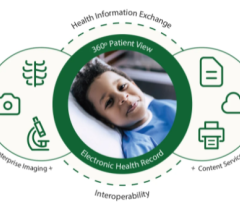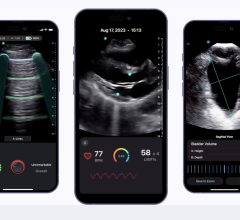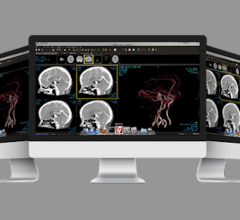CHICAGO – The Radiological Society of North America’s annual scientific assembly and technological toolbox closed out 2006 showcasing some intriguing developments that portend the progressive impact of information technology, along with the revitalization of some fundamental modalities and products.
The yearly conference and exhibition, which immediately follows the Thanksgiving holiday in Chicago’s McCormick Place, provided nearly 30,000 radiologists and other related healthcare professionals with peeks into what’s hot in diagnostic imaging and IT-related market segments.
Among the noteworthy highlights:
Workflow takes center stage. You were hard pressed to stop at any of the hundreds of exhibitor booths and not hear anyone mention the word “workflow” at least once – either in casual conversation or in product promotion. While the addition of bells and whistles may draw out the “how cool is that?” among attendees, that attitude almost always is followed by concerns about price and operational costs. After all, if a new feature needlessly overcomplicates usage in that it requires additional training and increased risk of malfunction, both of which translate into downtime, impeded throughput, reduced performance and productivity and revenue drains, then the message was “forget it.” Overall, clinicians like their high-tech tools to feature ease-of-use and simplicity in design and function. They want to activate those bells and whistles and useful capabilities with as few button pushes and screen taps as possible – relying instead on more intuitive software programs that anticipate needs and give them quick ways to answer them. Think plug and play. In fact, one company promoted similar user interfaces with its computed and digital radiography units. A prominent C-arm manufacturer touted the ability of clinicians to switch to 3-D from 2-D imaging at the press of a button and moving patients without affecting isocentricity. “The ‘this is cool’ era is over,” one vendor executive told Outpatient Care Technology. “It’s all about how to make something work and make it useable.”
Ultrasound is the new black. Previously relegated to the prenatal segment of women’s healthcare, ultrasound is re-emerging as an imaging force with which to be reckoned. From computed tomography-like multislice ultrasound techniques for improved visualization to tomographic ultrasound images to clinical uses as a uterine fibroid tumor-zapper, the “grandmommy” of the diagnostic imaging family (to the X-ray’s “granddaddy”) showed it plans to remain in the radiologist’s arsenal, even as it expands into oncology and surgery applications. And more than one major player advocated leveraging electronics with miniaturization in an effort to repackage capabilities typically available in a “big box” ultrasound unit into a smaller unit that is more mobile. Essentially, they’re applying a “BlackBerry” philosophy to ultrasound by installing high-end performance into a 10-pound box. A few companies have been marketing portable hand-held ultrasound models for several years and anticipate growth and interest to increase.
Lower-speed CT may be fast enough. Despite being lost in the hype of the high-speed, hot-rodding 64-slice, helical scanning and volumetric CT models (and one company’s very public foray into 256-slice technology), the basic 16-slice and 32-slice models remain reliable workhorses in the outpatient setting. That’s because the high-speed CTs are carving their niche in the cardiovascular and neurological market segments where they seem to be the most applicable, capturing detailed images of an organ (for example, the heart, brain or liver for hepatitis C) in a single rotation. Loosely translated, this means if you’re not pursuing cardiac or neuro patients then these pricey models serve as little more than costly marketing tools to give you a perceived edge over the competition. In fact, 16-slice CTs remain ideal for peripheral vascular work, and some companies are offering upgrade packages for 32-slice CTs that enable facilities to convert to 64-slice capabilities.
PACS is not just for radiology anymore. The radiology department and facility may have been the original – and exclusive – bailiwick for picture archiving and communications systems (PACS) but after more than a decade, it’s no longer the case. PACS are growing beyond their roots and expanding their imaging capabilities to other areas, such as cardiology, neurology and orthopedics. The key trend in PACS these days involves workflow – specifically, access (who has it and how) and utility (how easy it is to use). One vendor executive characterized PACS as a “decentralized” tool no longer driven by the “big modality companies” that marketed their own proprietary standards, hardware and software. He also questioned the emergence of companies offering single databases to handle disparate PACS operations on the premise that if the database must be upgraded or repaired more than just the radiology department would feel the impact in terms of downtime.
All for one and one for all was common. For the second consecutive year, convergence, customization and flexibility, particularly as it applies to workflow, seemed to be woven throughout many of the product and equipment offerings. From fusion imaging modalities to monitor and photograph anatomical and physiological properties simultaneously, to combination digital and radiographic/fluoroscopic rooms, exhibitors stressed more multifunctionality for your purchasing dollar to improve productivity and patient throughput. Another popular phrase touted by manufacturers was adaptive technology – imaging and radiation oncology equipment that accurately tracked the motion over time of a beating heart or a moving tumor.
Tomo may become majordomo in 2007. Although TomoTherapy Inc. has promoted tomosynthesis for a number of years, the technique, which generates a three-dimensional image of the breast through multiple X-rays from different angles without the need for conventional breast compression, generated more intense interest as ears and eyes turned toward 2007. That’s when several of the top imaging and information technology companies planned to release their own products, led by Hologic Inc., potentially in late 2007.
Breast care chomps at the byte. With terms like full-field digital mammography, multimodality breast imaging workstations and the Digital Mammographic Imaging Screening Trial (DMIST), which was spearheaded by the National Cancer Institute, adopted as mainstream concepts in the standard clinical lexicon, many manufacturers have catapulted breast care to the forefront of their strategic and tactical marketing and product planning for the year. In fact, companies said they anticipate more rapid adoption and implementation of digital capabilities, specifically for breast imaging applications, in 2007.
RSNA 2007 takes place November 25-30, promoting an IT emphasis this year with the theme, “Connecting Radiology.”
Feature | March 01, 2007 | Rick Dana Barlow
Workflow, adaptability emerged on top at annual conference


 June 28, 2024
June 28, 2024 








